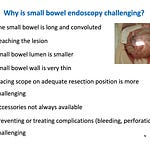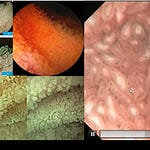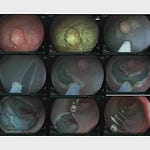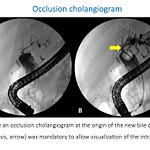👆 This is a 35-minute deep dive into the reality of AI in endoscopy - examining the hype, analyzing the studies everyone cites, and sharing what actually works in clinical practice. For readers who prefer text over video, the full analysis is below for paid subscribers.
As someone who performs endoscopy across multiple continents and uses AI for many daily activities, I want to share what we're actually seeing when these systems meet real patients and real clinical scenarios. Many experts conclude that current AI systems simply "put a square on a lesion that you already saw"—and that has been my experience.
The Promise vs. The Reality
Let me share a case that illustrates the complexity of AI implementation. A 75-year-old patient with many illnesses came with hematochezia and was on anticoagulation. This patient was a very poor surgical candidate. During endoscopy, we found two adenomas and two hyperplastic polyps. The AI system found these polyps and recommended surveillance colonoscopy in seven years based on the visual diagnosis.
But we were doing a colonoscopy for bleeding, not polyp screening. The AI machine was correct about the polyps, but this was really wrong because we were dealing with a patient whose angiodysplasia was bleeding and needed treatment. We weren't going to resect polyps during a procedure where the patient was on anticoagulation—it was an emergent procedure. The AI system focused only on polyps, but we were focusing on the patient.
Understanding Artificial Intelligence in Context
Intelligence is knowledge through learning that's applied to solve problems. Artificial intelligence is the use of a program or algorithm by computers to perform tasks that normally require human intelligence. While they appear similar, there are huge differences because AI is not driven by survival instincts and lacks abstract thinking.
AI is as good as the information it has received, but the computer is not able to acquire new data as it moves on—that data needs to be fed later. The problem is you get a machine that does artificial intelligence during your colonoscopy, and that's it. It's not regularly updated.
Consider this fundamental difference: our brains can learn from a single experience. We only need to see one picture of a cat, and then humans can recognize that cat even if shown just the ears or other parts. Artificial intelligence needs thousands of pictures to get to the same conclusion. Importantly, the pictures we need to feed the system need to be good, and we're not sure that all systems have enough pictures.
Even if we see the back of a cat, we know it's a cat. If an artificial intelligence machine is confronted with an abstract graphic representation, it will unlikely say it's a cat because if it was only fed pictures of real cats and gets a graphic abstract, it will not be able to make a conclusion.
AI's Strengths and Limitations
AI is great at image detection, face recognition, and speech recognition. It doesn't need sleep, but AI is definitely not good at applying solutions to different problems, taking care of the entire patient, focusing on patient care, or problem-solving in new situations. The AI systems we're discussing were trained to find polyps, but there are a myriad of other conditions we see during endoscopy. When I do a colonoscopy, I look at everything.
Examining the Evidence
Listen to this episode with a 7-day free trial
Subscribe to EndoCollab to listen to this post and get 7 days of free access to the full post archives.









